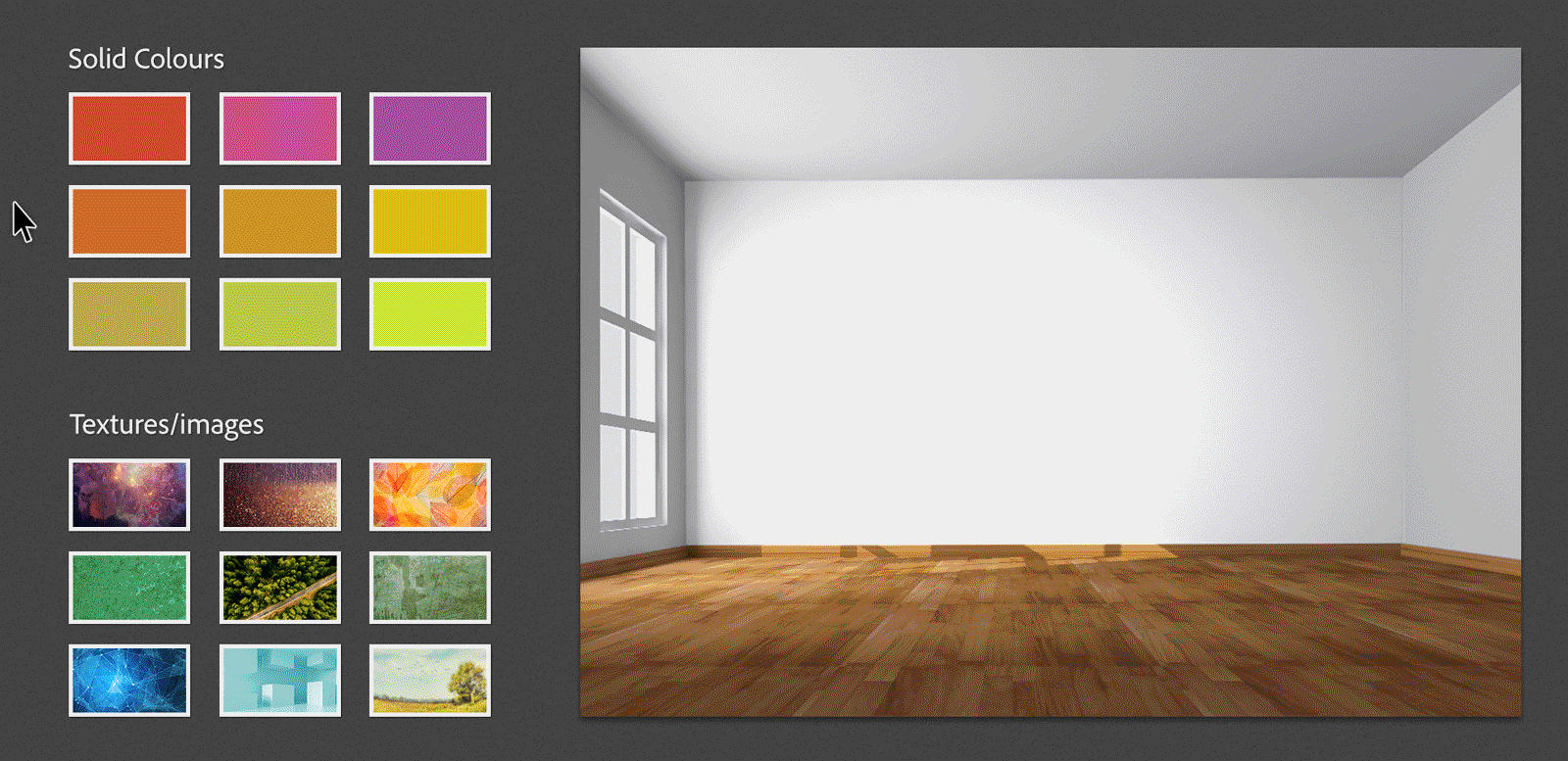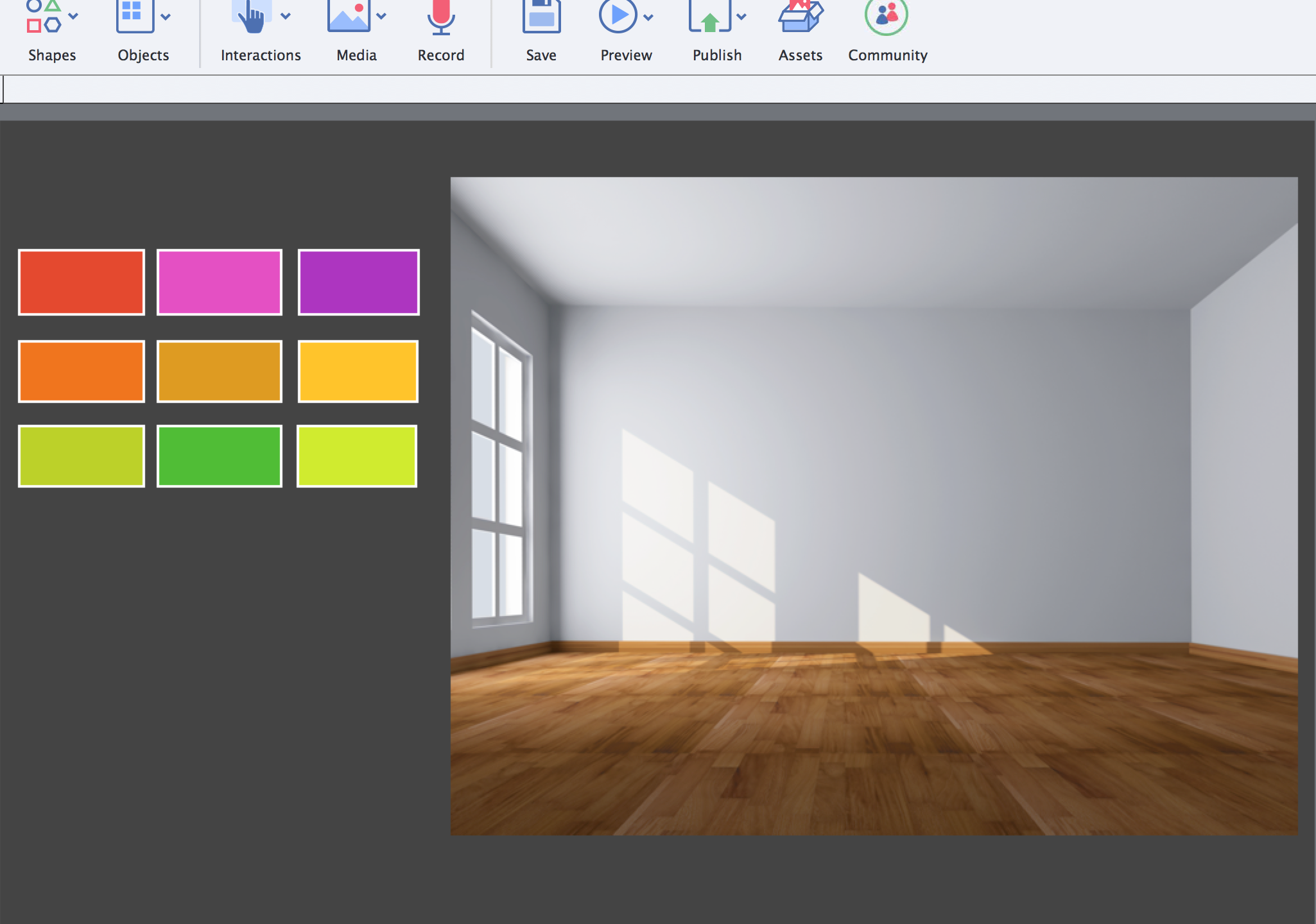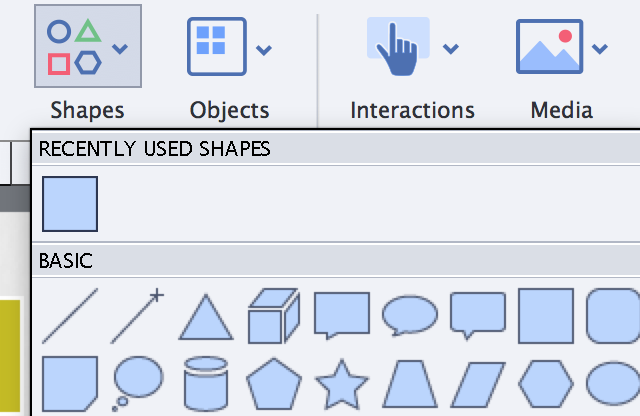The procedures in this document require you to use assets such as images and sample Adobe Captivate project files. You can choose to use your own assets and samples. However, it is recommended that you download and extract the following zip file to your computer:
Before working with Multi-state objects in Adobe Captivate, keep these points in mind:
- Any object can have multiple states.
- Interactive objects have in-built states.
- You can customize the states of static and interactive objects.
- Buttons and smart shapes have in-built states with associated styles.
-
To add objects, click assets and add a Character to your slide. You can select between CloseUp, Half, and Full character. Let's rename the state as Joe. Similarly, rename all the objects in your slide. To learn, see Rename objects in your project.
Opomba:
Ensure that you add assets you use in your project to the Captivate Library for the project to be able to access them.
You can rename objects and states in Adobe Captivate. When you add an object to your project, a dialog is displayed. Enter a name and click OK. To rename, select the object and rename at the top field of the Properties inspector.
To rename a state, select the state and click State View in the properties panel. In the state list, right-click the slide and select Rename State.
Opomba:
If you add any Smart Shape to the slide, convert them into a button to activate the Actions option in the Properties inspector.

- Normal: The default state of an object in the state view. This is the state you first see when you play your project.
- Rollover: The state highlights the button when a user hovers the pointer over the selected state. For example, for quiz questions, if you have five options for the correct answer, the rollover state assists identify the previously selected answers.
You can use different formatting for all the four button states. To change formatting, select a button and use the settings in the Character section of the Properties inspector.
For multi-state objects, you can choose to retain state on revisiting the slide. This is helpful when you are creating an interaction with multiple slides involved and want the selected state to be retained on revisiting the slide. For example:
- Using states for module buttons in a custom menu slide.
- Using states for the Progress Bar elements, which are displayed for the rest of the project.
- Branching interaction where the learners need to return to the main slide to explore the rest of
- the options.
- When you are using Go to the next/previous state actions, and you revisit the slide, object reset to the initial state. By using this option, you can start looping from the state last visited.
To retain the state on revisit, select the multi-state object, go to the Properties Inspector, and select Retain State on Slide Revisit.
You can reset the changes you make to the states in the States View. Right-click a state and select Reset State. To delete, select Delete State. When you are done with the changes, click Exit State in the toolbar.
Now that you have tried working with multi-state objects in Adobe Captive, let's create an interesting color visualizer project. In this project, users can check how the wall looks with different colors and textures.
Here is how the final project looks like:

-
Let's create multi-states for the image. Follow the instructions in the Add states to an object and Add multiple states to an object sections. Name the states as per the color options you add to the project. Create states equal to the total shapes you add to the project.

-
After you add states to the image, exit the state view and link the shapes to their respective states. For example, match the shape with color blue with the Blue state. Now, convert the shapes to buttons to enable linking. Select a shape and in the Properties inspector, select the Use as Button option under the Style Name section.
 Use shapes as Buttons
Use shapes as Buttons -
Follow the steps in the Add buttons to your project section to link states to the shapes.








